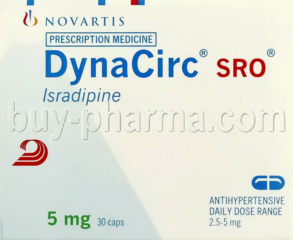.gif) VIARTIS
|
|||||||||||
|
PARKINSON'S DISEASE |
|||||||||||
|
|
|||||||||||
|
|
PARKINSON'S DISEASE NEWS
|
|
|||||||||
|
APRIL 2014 30th April 2014 - New book ALTER YOUR COURSE : PARKINSON'S - THE EARLY YEARS Monique L.Giroux, Sierra M.Farris
24th April 2014 - New research CLINICAL TRIAL OF GENE THERAPY FOR PARKINSON'S DISEASE Lancet [2014] 383 (9923) : 1138-1146 (S.Palfi, J.M.Gurruchaga, G.S.Ralph, H.Lepetit, S.Lavisse, P.C.Buttery, C. Watts, J.Miskin, M.Kelleher, S.Deeley, et al) Complete abstract ProSavin (NLX-P101) uses LentiVector gene delivery technology to deliver genes for three enzymes they suggest are required for the formation of dopamine. The product is administered locally to the relevant region of the brain in order to increase the brain's own capacity for the formation of dopamine. For more information go to Prosavin
In a previous clinical trial the degree of efficacy was quite moderate, with an average 27% improvement after 3 months, peaking at 31% after 6 months, and declining to 23% after 2 years. In the long term stimulating gene and enzyme levels artificially reduces a person's own formation of those genes and enzymes. In order to refer to this article on its own click here
15th April 2014 - New research GOOGLE GLASS BEING TESTED FOR PARKINSON'S DISEASE Newcastle University are investigating Google Glass as an assistive aid in order to help people with Parkinson's Disease retain their independence for longer.
The technology is voice-operated and is also linked to the internet. It is not currently available outside the USA. For more information go to a review of Google Glass Researchers have been working with a group of Parkinson's Disease volunteers aged between 46-70 years. They are working on the next stage of the project, using the technology to provide discreet prompts linked to key behaviours typical of Parkinson's Disease, such as reminding the individual to speak up or to swallow to prevent drooling. Glass can also be used as a personal reminder for things such as taking medication and making appointments. Glass is connected to the internet so that the wearer can link it to computers and mobile phones. So if the wearer is alone they just have to look through the Glass so that carers or relatives will be able to see exactly where they are. The wearer can also tell it to call someone and it rings them. For more information go to Newcastle University In order to refer to this article on its own click here
7th April 2014 - New research THE NAZI DISCOVERER OF L-DOPA FOR PARKINSON'S DISEASE
Journal of the History of the Neurosciences 2014 Apr 3 [Epub ahead of print]
(H.Czech, L.A. Zeidman)
Complete abstract
In 1960 Dr. Hornykiewicz demonstrated that dopamine levels were below normal in the brains of people who died of Parkinson's Disease. He and Dr. Arvid Carlsson, believed that L-dopa, a precursor in the biosynthesis of dopamine, could treat Parkinson's Disease. Dr. Hornykiewicz and Dr. Birkmayer began to treat patients with L-dopa. They noticed marked short-term improvements. They published their findings in 1961, which eventually led to L-dopa being the most widely used treatment for Parkinson's Disease. For more information go to Walther Birkmayer In order to refer to this article on its own click here
2nd April 2014 - New clinical trial
ISRADIPINE BEING TESTED FOR PARKINSON'S DISEASE
The basis for the clinical trial is that data from large studies found that there was a lower incidence of Parkinson's Disease among those people who took Isradipine. However, when Isradipine was tested in Phase II clinical trials in people who had Parkinson's Disease Isradipine caused side effects. The most common adverse events were peripheral edema and dizziness. Isradipine also failed to have any significant effect on Parkinson's Disease symptoms. For more information go to the Phase II clinical trial In order to effectively treat Parkinson's Disease effectively dopamine formation must be increased but, even in theory, calcium channel blockers can not do that. In order to refer to this article on its own click here
|
|||||||||||
.gif) |
|||||||||||
| ©2006-2014 Viartis | |||||||||||
| [email protected] | |||||||||||
 Publisher's
description : This book is not intended to be filled with facts about the
disease; there are many books that cover these topics. Instead we have focused
on 2 questions, “Does PD present an opportunity in disguise ? What information,
actions or attitudes are most helpful early in the disease to set the stage for
living your best now and into the future?” Alter Your Course tells a different
story -one that is emerging within you -the person with PD. Your story can be
filled with hope, inspiration, empowerment, resiliency and strength. Each
chapter concludes with helpful advice designed to help you take control of your
PD journey and alter your course. The last chapter is filled with advice; from people like you-living with PD.
Publisher's
description : This book is not intended to be filled with facts about the
disease; there are many books that cover these topics. Instead we have focused
on 2 questions, “Does PD present an opportunity in disguise ? What information,
actions or attitudes are most helpful early in the disease to set the stage for
living your best now and into the future?” Alter Your Course tells a different
story -one that is emerging within you -the person with PD. Your story can be
filled with hope, inspiration, empowerment, resiliency and strength. Each
chapter concludes with helpful advice designed to help you take control of your
PD journey and alter your course. The last chapter is filled with advice; from people like you-living with PD.


 Researchers
have determined that Birkmayer was not only an early illegal member of the
SS and the Nazi party but also took part in "de-Jewification". He also was a
leader in the Nazi racial policy office and was praised for his dedication
and fanaticism despite being forced to later resign from the SS. He sought
support from leading Viennese Nazis and was able to maintain his
professional status for the war's remainder. Postwar, he succeeded at
reintegration personally and professionally into Austrian society, all but
erasing any obvious ties to his Nazi past.
Researchers
have determined that Birkmayer was not only an early illegal member of the
SS and the Nazi party but also took part in "de-Jewification". He also was a
leader in the Nazi racial policy office and was praised for his dedication
and fanaticism despite being forced to later resign from the SS. He sought
support from leading Viennese Nazis and was able to maintain his
professional status for the war's remainder. Postwar, he succeeded at
reintegration personally and professionally into Austrian society, all but
erasing any obvious ties to his Nazi past.  Isradipine
is a calcium channel blocker that is marketed as Dynacirc. Dynacirc is a
drug that is prescribed to treat high blood pressure. For more information
concerning Dynacirc go to
Isradipine
is a calcium channel blocker that is marketed as Dynacirc. Dynacirc is a
drug that is prescribed to treat high blood pressure. For more information
concerning Dynacirc go to